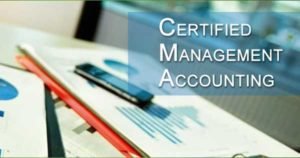Table of Contents
Last updated on April 2nd, 2024 at 07:36 am
Analysing choices concerning predefined benchmarks is part of decision analysis, which helps people make wise choices. Risks, trade-offs, and probable outcomes are among the aspects that are taken into account.
On the other hand, risk modelling is an essential process that helps identify and assess potential dangers connected to a specific decision or condition. It comprises seeing possible threats and devising plans to deal with them successfully while utilising various tools and techniques.

The principles of decision analysis and risk modelling can be better understood by aspiring certified management accountants (CMAs) and finance professionals, as these abilities are essential for making wise company decisions.
Also, these ideas are crucial subjects addressed in the CMA Exam. Thus CMA USA training is an excellent approach to gaining proficiency in these ideas.
What is Decision Analysis?
Decision analysis (DA) is a method of decision-making that entails determining and evaluating each component of choice and then acting with the intention that results in the best outcome.
Decision analysis seeks to guarantee that choices are made with access to all pertinent data and options. For instance, a business can choose between two million-dollar investments, or an individual might use it to select between different retirement savings options.
The foundations of decision analysis can be utilised to handle a wide range of difficulties, from complicated commercial problems to straightforward day-to-day issues.
How Does Decision Analysis Work?
Decision analysis enables businesses to assess and simulate the possible results of various actions to choose the best move. The firm must comprehend many facets of a problem to make an informed decision to be productive.
Understanding the many objectives, outputs, and uncertainties involved in the analysis includes using probabilities to gauge how specific actions will pan out.
Framing the issue to permit additional examination is one of the most crucial elements. As the initial step in decision analysis, framing is developing a framework to assess the problem from several angles. These may consist of success indicators, action plans, and opportunity statements.
A model can be constructed to determine the favorability of various outcomes once the framework has been established.
Influence diagrams and decision trees are two types of models.
What Is Risk Modelling?
Compared to more conventional approaches, like purchasing insurance to protect your organisation.
Creating practical risk analyses, emphasising how beneficial insurance may be, and adopting a more thorough approach to risk research and solutions are all part of risk modelling.
How Does Risk Modeling Work?
Making accurate assumptions about risk requires using historical data and simulation, extreme value theory (EVT), market risk, and expert elicitation. In addition to making assumptions, modelling calculates potential/maximum risk using economic, statistical, and financial methods.
Some people like categorising modelling into three primary categories: hybrid, qualitative, and quantitative. Comparative modelling relies more on experience and irrational knowledge than quantitative modelling on statistical facts and numerical evidence. The hybrid business model, combining the two, will benefit most companies.
Benefits of Decision Analysis
The benefits of decision analysis include the following:
Systematic and structured approach: Decision analysis is an organised, structured method of decision-making that helps guarantee all pertinent data is considered and analysed consistently and impartially.
Improved decision quality: Decision analysis can assist people and organisations in making better decisions and getting better results by discovering and evaluating all pertinent information and possible consequences.
Reduced uncertainty: By offering a transparent and impartial framework for weighing options and gauging risks, decision analysis can help eliminate uncertainty.
Increased efficiency: Decision analysis can assist people and organisations in making more effective use of their time and resources by dissecting difficult decisions into smaller, more manageable components.
Enhanced communication and collaboration: By giving decision-makers a common language and framework for weighing options and analysing risks, decision analysis can aid in communication and collaboration.
Improved risk management: Decision analysis may assist companies in reducing their exposure to risk and avoiding costly mistakes by identifying potential hazards and creating strategies to mitigate or manage such risks.
Benefits of Risk Modelling
Cost savings: Organisations can design systems to reduce costs and increase return on investment by using risk modelling to identify potential hazards and the expenses that go along with them.
Better resource allocation: Risk modelling can assist organisations in allocating their resources more effectively and efficiently by highlighting the most critical risks and possible outcomes.
Improved compliance: Businesses may develop strategies to comply with relevant laws and regulations using risk modelling to detect potential regulatory and compliance risks.
Better stakeholder engagement: By displaying a transparent and impartial approach to managing risks and making choices, risk modelling can assist companies in engaging stakeholders and fostering trust.
Improved competitive advantage: Organisations can obtain a competitive edge in their sector and experience long-term success by successfully managing risks and making more intelligent decisions.
Enhanced strategic planning: By identifying potential risks and opportunities and evaluating the possible effects of various scenarios, risk modelling can assist businesses in creating more successful strategies.
Difference Between Decision Analysis and Risk Modelling
| Decision Analysis | Risk Modelling |
| It is a systematic and organised method of decision-making. | It is a statistical and analytical approach to risk assessment. |
| Evaluates all critical data and outcome possibilities. | Stresses locating and calculating potential hazards. |
| Simplifies difficult decisions into simpler, more logical chunks. | Reduces risks to manageable, smaller components. |
| Recognises and assesses trade-offs between alternatives. | Analyses the likelihood and possible consequences of various risks. |
| Evaluates various factors and viewpoints to choose the best course of action. | It recognises potential hazards and creates plans to reduce or control such risks. |
| Aims for better decision-making and better results. | Strives to minimise risk exposure and prevent expensive errors. |
| Requires interpreting information and making subjective judgements. | Utilises statistical analysis and objective data. |
| It can be used in a variety of situations where decisions need to be made. | Utilised mainly concerning risk management. |
Conclusion
Decision analysis and risk modelling are critical tools for businesses and finance professionals to make informed decisions in a rapidly changing environment. By utilising these techniques, professionals can mitigate risks, maximise opportunities, and improve their organisations’ bottom line.
If you want to enhance your skills and knowledge, consider taking Imarticus Learning’s Certified Management Accountant (CMA) course. This comprehensive US CMA course covers all aspects of the CMA Exam and provides hands-on training in the latest techniques and best practices in risk modelling and decision analysis. With this CMA USA training, you will gain the skills and knowledge to become a certified management accountant, an in-demand profession in the business and finance industries.
Enrol now in Imarticus Learning’s CMA USA course and take the first step towards a successful career in management accounting.

